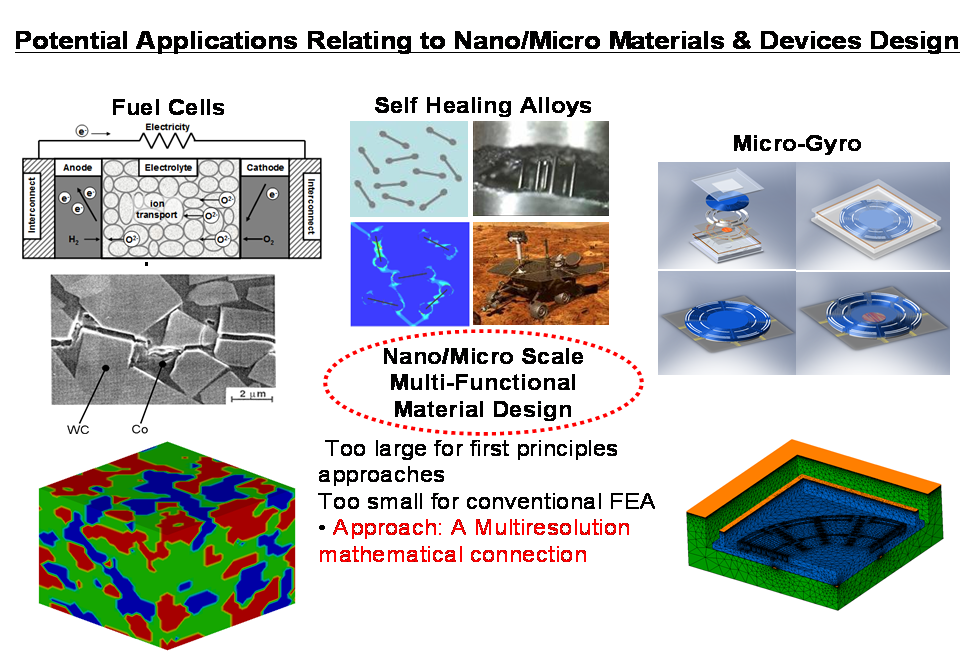Research / Computational MechanicsComputational Multiresolution Mechanics of Solids and Structures
In the not too distant future, an integrated multiscale analysis system for the design of a reliable engineering structure to sustain harsh environmental conditions within a predetermined lifetime may be possible. In contrast to standard hierarchical homogenization analysis, the proposed multiresolution analysis framework will provide concurrent analysis of critical material, product structure, and manufacturing decisions in an integrated manner. Such capability is currently missing, but it is critical for achieving integrated material, product, and process design in a multiresolution, multiphysics design environment.

The multiresolution mechanics theory is suitable for the analysis of the multiscale/multiphysics material systems such as fuel cells, self healing alloys, high strength alloys, high toughness alloys, microsystems, and thermoelectric materials, as illustrated in Figure 1. These nano/micro scale multi-functional materials are too large for first principles approaches, and too small for conventional FEA. The multiresolution mechanics connects all the scales dictated by the microstructure in a particular material.
The key to developing advanced materials is the understanding of the interplay between the various physical scales present, from the atomic level interactions, to the microstructural composition and the macroscale behavior. New technological advances today allow for a range of advanced composite materials, including multilayer materials and nanofiber-matrix composites. By designing material microstructure intelligently, we may hope to create new materials with desired combinations of strength, toughness and density. The ability to do this will require new SBE&S methods that can be used to predict macroscale properties accurately based on microstructure (and nanostructure) without resorting to empiricism. A rigorous mathematical framework for multiscale modeling and material optimization will help to make super-lightweight, ultra-strength, low-wear materials a reality of everyday life - for energy related, industrial, and medical applications alike. In materials engineering, rather than randomly discovering materials and exploiting their properties, the goal is to develop a comprehensive understanding of microstructure-properties relationships in order to systematically design materials with specific desired properties.

